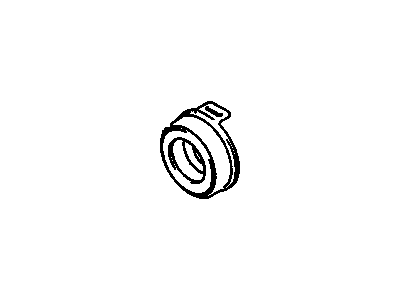
My Garage
My Account
Cart
Genuine Chevrolet Metro Release Bearing
Clutch Release Throw Out Bearing- Select Vehicle by Model
- Select Vehicle by VIN
Select Vehicle by Model
orMake
Model
Year
Select Vehicle by VIN
For the most accurate results, select vehicle by your VIN (Vehicle Identification Number).
1 Release Bearing found
Chevrolet Metro Bearing,Clutch Release
Part Number: 91174532$7.45 MSRP: $91.56You Save: $84.11 (92%)Ships in 1-2 Business Days
Chevrolet Metro Release Bearing
Each OEM Chevrolet Metro Release Bearing we offer is competitively priced and comes with the assurance of the manufacturer's warranty for the part. Furthermore, we guarantee the speedy delivery of your orders right to your doorstep. Our hassle-free return policy is also in place for your peace of mind.
Chevrolet Metro Release Bearing Parts Questions & Experts Answers
- Q: How to remove and install the Clutch Fork and Release Bearing on Chevrolet Metro?A:To remove the components, first disconnect the negative cable from the battery, then remove the transaxle. Note how the return spring is hooked onto the release shaft fork before detaching it using pliers. Slide the clutch release bearing off the transaxle input shaft, then remove the nut and pinch bolt from the clutch release arm and take the arm off the release shaft. Next, remove the cover from the release shaft seal, followed by the release shaft seal and No. 1 bushing using a bushing remover or a large socket. Take out the release shaft and return spring from the transaxle, and then remove the No. 2 bushing with a bushing remover and a slide hammer. For inspection, hold the center of the bearing and rotate the outer portion while applying pressure; if it doesn't turn smoothly or is noisy, replace it. Wipe the bearing clean and check for damage, wear, and cracks without immersing it in solvent. Inspect the release lever, fork, and bearing retainer for any wear or damage, replacing the right transaxle case if necessary. For installation, tap the No. 2 bushing into the transaxle with a hammer and a large socket, greasing the inside of the bushing. Install the release shaft and spring, then grease the inside of the No. 1 bushing, sliding it onto the end of the release shaft and tapping it into place. Grease the lip of the new seal and drive it into place using a large socket, staking the transaxle case against the seal at two points. Slide the shaft seal cover onto the release shaft, install the clutch release arm ensuring alignment with the punch marks, grease the new release bearing, and slide it onto the input shaft. Hook the return spring over the release shaft fork and install the transaxle, followed by adjusting the Clutch Cable.






